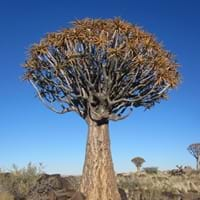Life Span
Annual and Perennial
Perennial
Type
Bulb or Corm or Tuber
Succulent
Origin
Central America, South America
Southern Africa, South Africa
Types
Vine, Flowering plant
Not Available
Number of Varieties
Not Available
Habitat
All sorts of environments, Along Railroads, Banks, Moist Ditches, Roadsides, rocky banks of streams
Sandy areas, Semi arid regions, Semi desert
USDA Hardiness Zone
10-13
10-15
Sunset Zone
21,22
8, 9, 12, 13, 14, 15, 16, 17, 18, 19, 20, 21, 22, 23, 24
Habit
Vining/Climbing
Upright/Erect
Minimum Height
Not Available
Flower Color
Purple, Rose
Lemon yellow
Flower Color Modifier
Bicolor
Not Available
Fruit Color
Not Available
Not Available
Leaf Color in Spring
Purple, Dark Green, Black
Blue Green
Leaf Color in Summer
Light Green
Blue Green
Leaf Color in Fall
Several shades of Green
Blue Green
Leaf Color in Winter
Light Green
Blue Green
Leaf Shape
Acicular
Succulent
Plant Season
Spring, Summer, Fall, Winter
Spring, Summer, Fall, Winter
Sunlight
Full Sun, Partial Sun
Full Sun, Partial Sun, Partial shade
Growth Rate
Very Fast
Very Slow
Type of Soil
Clay, Loam, Sand
Clay, Loam, Sand
The pH of Soil
Acidic, Neutral, Alkaline
Neutral, Alkaline
Soil Drainage
Well drained
Well drained
Bloom Time
Late Spring, Early Summer, Summer, Late Summer, Early Fall, Fall, Late Fall
Early Spring, Spring
Tolerances
Drought
Drought
Where to Plant?
Container, Ground
Ground
How to Plant?
Cuttings, Leaf Cutting, Tuber propagation
Seedlings
Plant Maintenance
Medium
Medium
Watering Requirements
Keep the Soil well drained, Needs very little water
Average Water Needs
In Summer
Lots of watering
Lots of watering
In Spring
Moderate
Moderate
In Winter
Average Water
Average Water
Soil pH
Acidic, Neutral, Alkaline
Neutral, Alkaline
Soil Type
Clay, Loam, Sand
Clay, Loam, Sand
Soil Drainage Capacity
Well drained
Well drained
Sun Exposure
Full Sun, Partial Sun
Full Sun, Partial Sun, Partial shade
Pruning
Remove damaged leaves, Remove dead branches, Remove dead leaves
Requires very little pruning
Fertilizers
All-Purpose Liquid Fertilizer
No fertilizers needed
Pests and Diseases
Red blotch
Not Available
Plant Tolerance
Drought
Drought
Flower Petal Number
Single
Single
Foliage Texture
Coarse
Bold
Foliage Sheen
Matte
Matte
Attracts
Aphids, Beetles, Cutworms, Insects, Mites, Whiteflies
Hummingbirds
Allergy
Abdominal pain, allergic reaction, Nausea, Skin rash, Twitching of face
Asthma
Aesthetic Uses
Not Used For Aesthetic Purpose
Showy Purposes
Beauty Benefits
Not Available
Not Available
Environmental Uses
Air purification
Air purification
Medicinal Uses
Cures constipation, Fiber, Low calories, lowering blood pressure, Potassium, ß-carotene, Vitamin A, Vitamin C
No Medicinal Use
Part of Plant Used
Leaves, Root, Shoots, Stem, Tuber
Whole plant
Other Uses
Starch, Used As Food, Used as Ornamental plant
Not Available
Used As Indoor Plant
Sometimes
No
Used As Outdoor Plant
Yes
Yes
Garden Design
Container, Edible, Groundcover, Hanging Basket, Herb / Vegetable, Mixed Border, Rock Garden / Wall, Vine
Container, Feature Plant, Foundation, Mixed Border, Tropical
Botanical Name
IPOMOEA batatas 'Blackie'
ALOE dichotoma
Common Name
Blackie Sweet Potato Vine, Sweet Potato Vine
Kokerboom
Quiver Tree
In Hindi
शकरकन्द
तरकश ट्री
In German
Süßkartoffel
Köcherbaum
In French
Patate douce
Quiver Tree
In Spanish
Ipomoea batatas
Árbol de la aljaba
In Greek
Sweet potato
φαρέτρα Δέντρο
In Portuguese
Batata-doce
Árvore do quiver
In Polish
Wilec ziemniaczany
Quiver Drzewo
In Latin
Ipomoea batatas
pharetram ligno
Phylum
Tracheophyta
Tracheophyta
Class
Magnoliopsida
Liliopsida
Order
Solanales
Asparagales
Family
Convolvulaceae
Aloaceae
Clade
Angiosperms, Asterids, Eudicots
Angiosperms, Monocots
Tribe
Not Available
Not Available
Subfamily
Not Available
Asphodeloideae
Number of Species
Not Available
Properties of Sweet Potato Vine and Quiver Tree
Wondering what are the properties of Sweet Potato Vine and Quiver Tree? We provide you with everything About Sweet Potato Vine and Quiver Tree. Sweet Potato Vine doesn't have thorns and Quiver Tree doesn't have thorns. Also Sweet Potato Vine does not have fragrant flowers. Sweet Potato Vine has allergic reactions like Abdominal pain, allergic reaction, Nausea, Skin rash and Twitching of face and Quiver Tree has allergic reactions like Abdominal pain, allergic reaction, Nausea, Skin rash and Twitching of face. Compare all the properties and characteristics of these two plants. Find out which of these plant can be used as indoor plant. If you are interested to decorate your house and garden, find out aesthetic uses, compare them and select the plant which will beautify your surrounding. Along with beautification, try comparing medicinal and edible uses of Sweet Potato Vine and Quiver Tree and you can choose the plant having best and most benefits.
Season and Care of Sweet Potato Vine and Quiver Tree
Season and care of Sweet Potato Vine and Quiver Tree is important to know. While considering everything about Sweet Potato Vine and Quiver Tree Care, growing season is an essential factor. Sweet Potato Vine season is Spring, Summer, Fall and Winter and Quiver Tree season is Spring, Summer, Fall and Winter. The type of soil for Sweet Potato Vine is Clay, Loam, Sand and for Quiver Tree is Clay, Loam, Sand while the PH of soil for Sweet Potato Vine is Acidic, Neutral, Alkaline and for Quiver Tree is Neutral, Alkaline.
Sweet Potato Vine and Quiver Tree Physical Information
Sweet Potato Vine and Quiver Tree physical information is very important for comparison. Sweet Potato Vine height is 15.00 cm and width Not Available whereas Quiver Tree height is Not Available and width Not Available. The color specification of Sweet Potato Vine and Quiver Tree are as follows:
Sweet Potato Vine flower color: Purple and Rose
Sweet Potato Vine leaf color: Purple, Dark Green and Black
Quiver Tree flower color: Lemon yellow
- Quiver Tree leaf color: Blue Green
Care of Sweet Potato Vine and Quiver Tree
Care of Sweet Potato Vine and Quiver Tree include pruning, fertilizers, watering etc. Sweet Potato Vine pruning is done Remove damaged leaves, Remove dead branches and Remove dead leaves and Quiver Tree pruning is done Requires very little pruning. In summer Sweet Potato Vine needs Lots of watering and in winter, it needs Average Water. Whereas, in summer Quiver Tree needs Lots of watering and in winter, it needs Average Water.





